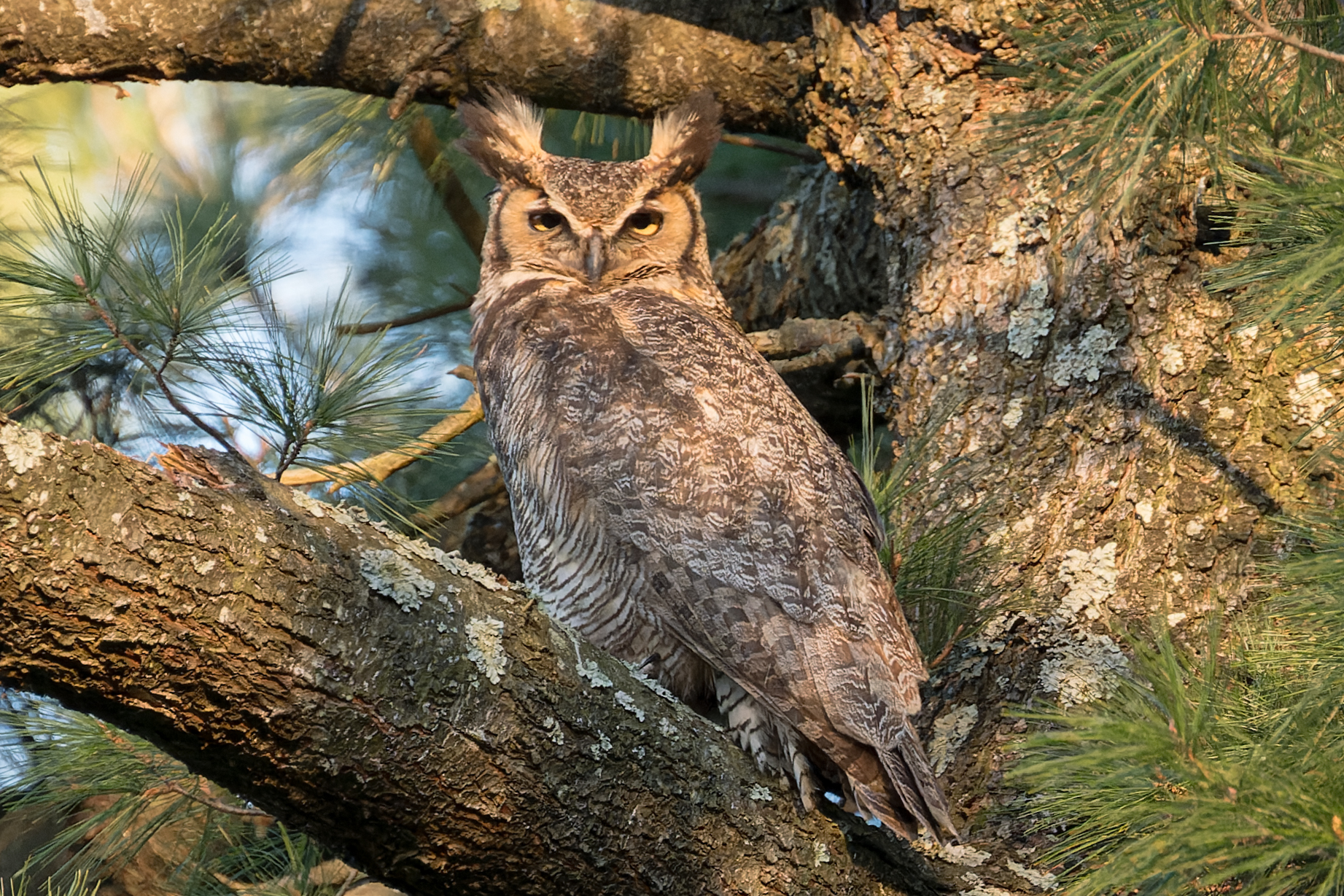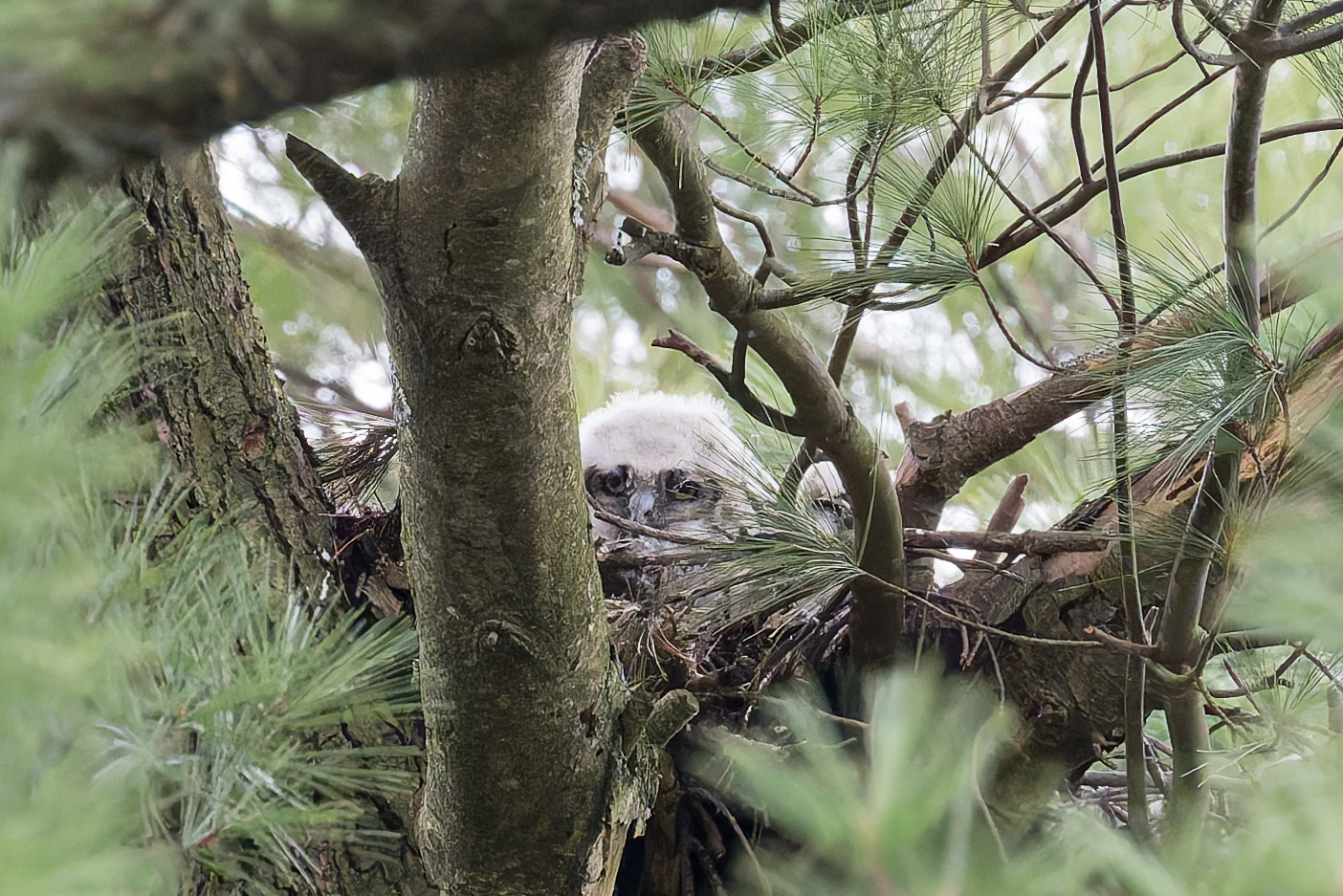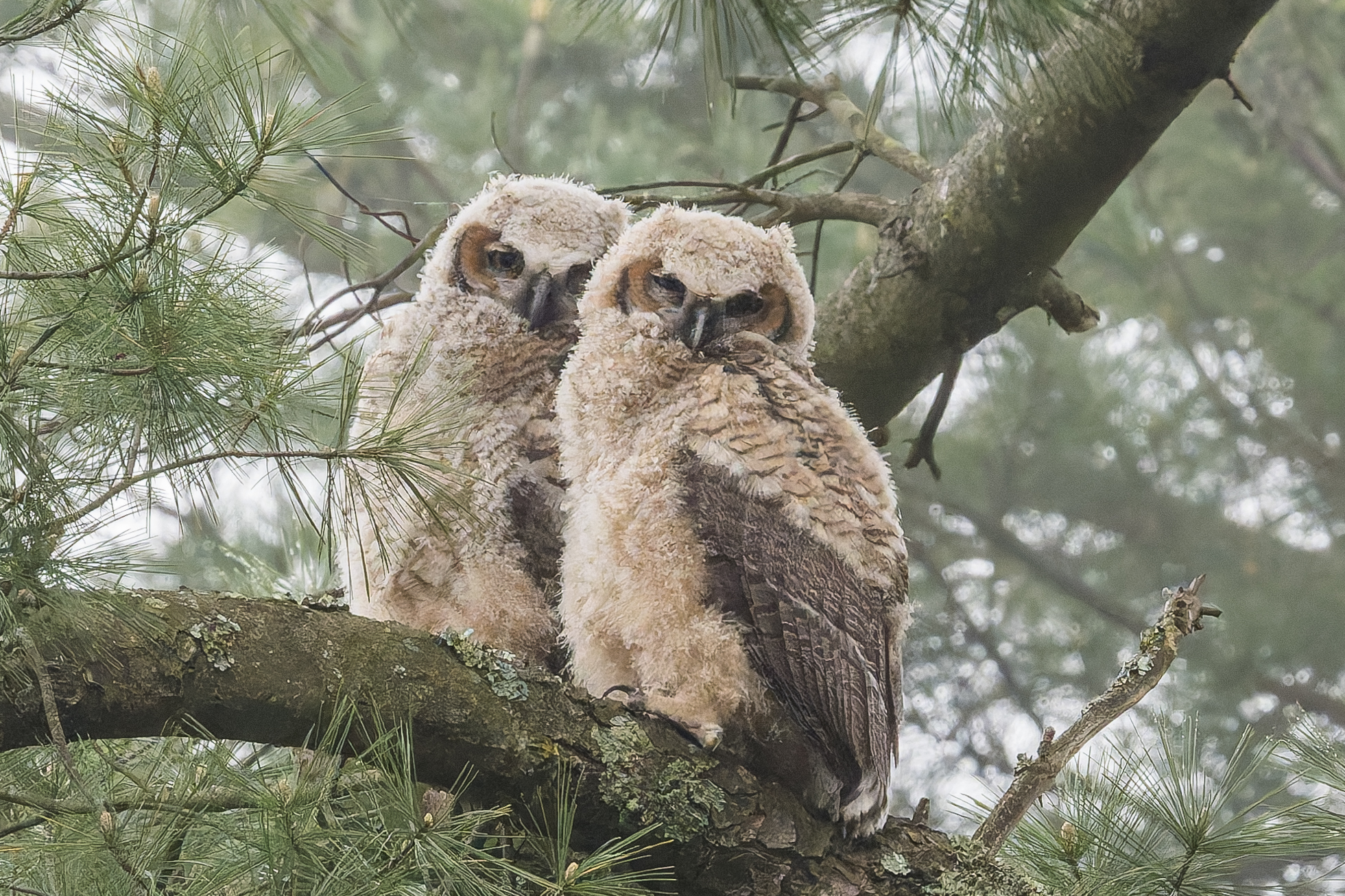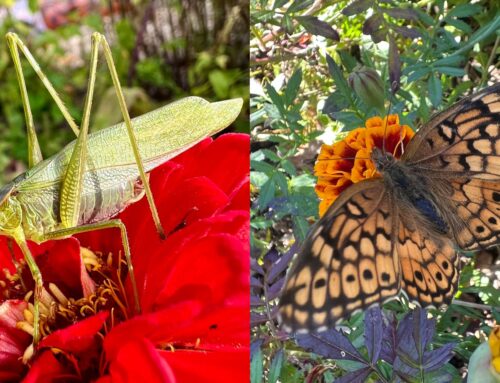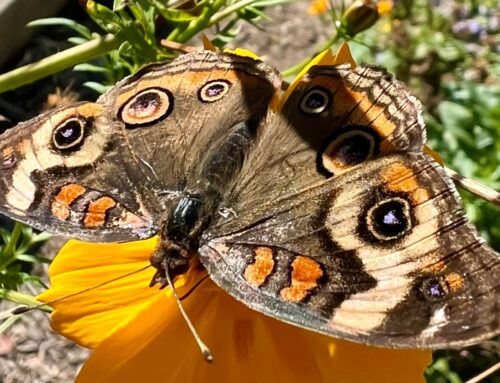The 2024 Great Horned Owl Nest: A Birder’s Eye View
Lucky birders at Tyler Arboretum have been able to closely follow a nesting pair of Great Horned Owls from courtship in January through the fledging of two owlets in April and a continuing “adolescent” period that may last through the summer.
Great Horned Owls are not rare or endangered. With an average territory of approximately 1.5 square miles, it is probable that other pairs nest within the arboretum. Their hooting is frequently heard, even in our suburban neighborhoods, but their secretive nocturnal habits can make their nests difficult to find. This year the stars aligned just right for Tyler birders.
Early Signs
The first indication that we might be able to find a nest this year was when we heard a pair of Great Horned Owls hooting during an evening owl prowl on January 27. Male Great Horned Owl hoots have a deeper tone than females that is easy to distinguish as they call back and forth in a pair bonding ritual that is called “duetting.” Our confidence was boosted by the fact that the owls were duetting in the vicinity of a nest that a pair of Red-tailed Hawks had used last year. Great Horned Owls do not build their own nests. They frequently take over old stick nests from a variety of birds and Red-tailed Hawk nests are a favorite.
Hopes were bolstered even further when, four days later, in the early morning of January 31, I witnessed two agitated, screaming Red-tailed Hawks flying around the stand of White Pines that held last year’s red-tail nest. From inside the pines I heard, but could not see, a female Great Horned Owl hooting back at the hawks. This went on for several minutes until the hawks gave up and disappeared. I suspect this was the moment when the owls took final ownership of the nest.
At Long Last, A Sighting
The Wednesday morning birders at Tyler regularly checked the nest after that date, but it was not for over six weeks, March 17, when we finally saw an adult Great Horned Owl peering over the edge. Why so long before seeing the owl? It is not unusual for incubating adult owls to be difficult to see in a nest, especially this one since it is approximately 60 feet up in the tree. The adults hunker down pretty deep in the nests while incubating eggs and young chicks.
Based on the timing of the first appearance of the owlets in the nest and their subsequent fledging, the eggs were likely laid about a week apart in early February and the babies born five weeks later — early March.
Once visible we were able to watch and photograph the amazing growth and development of these majestic, mysterious creatures.
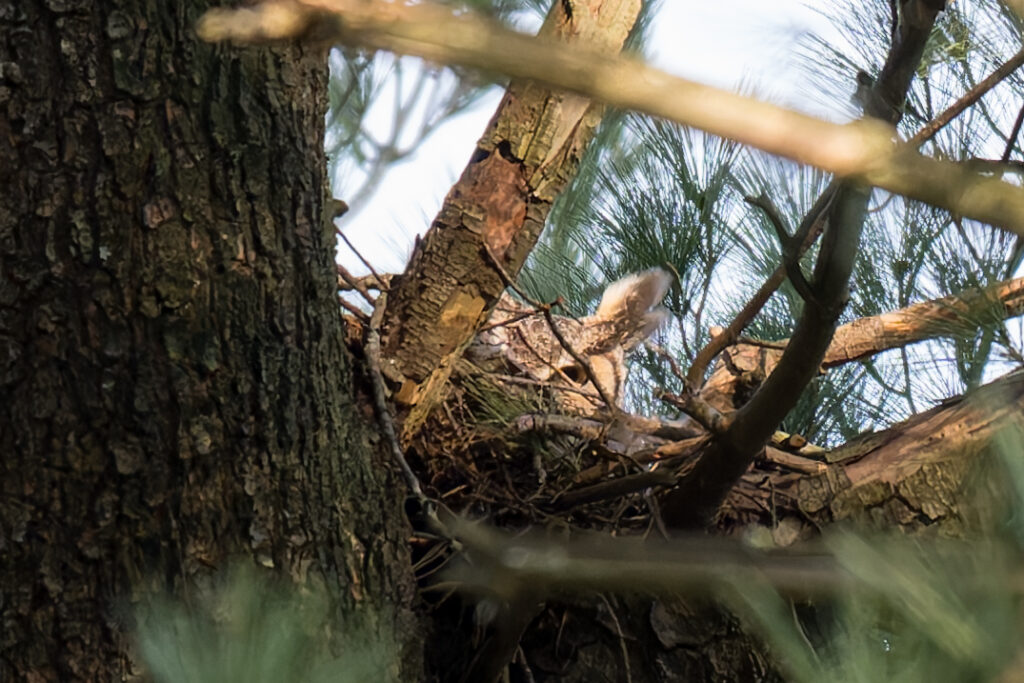
Here is the first glimpse of an adult, probably Mom, incubating on the nest, March 17. (Photo by Dave Eberly)
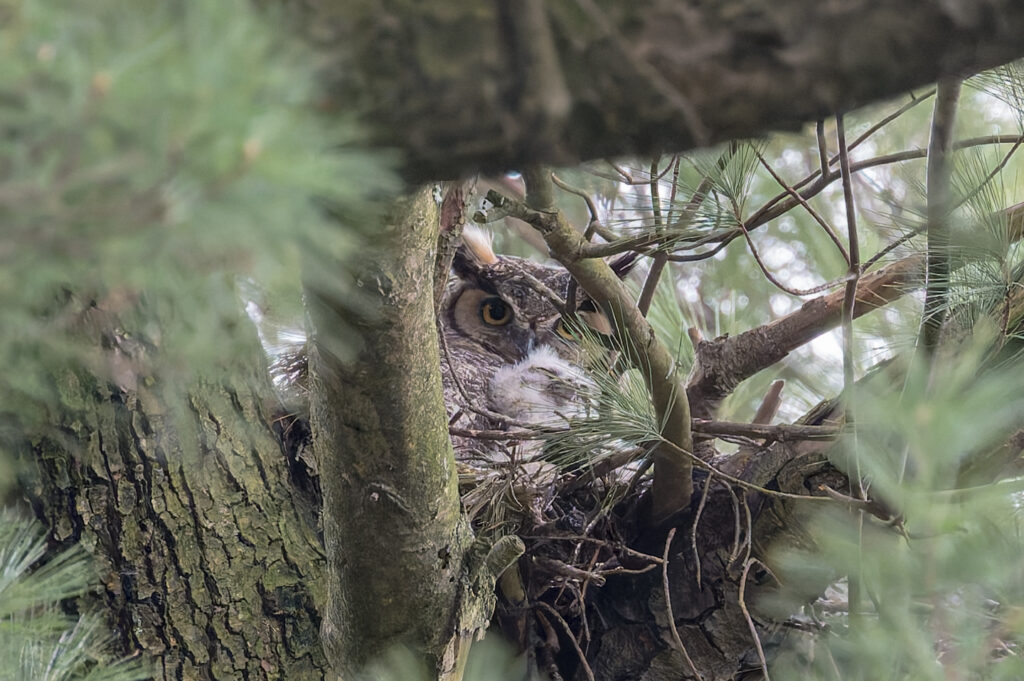
On April 4 we got our first decent glimpse of a nestling. This baby is likely about one month old. (Photo by Dave Eberly)
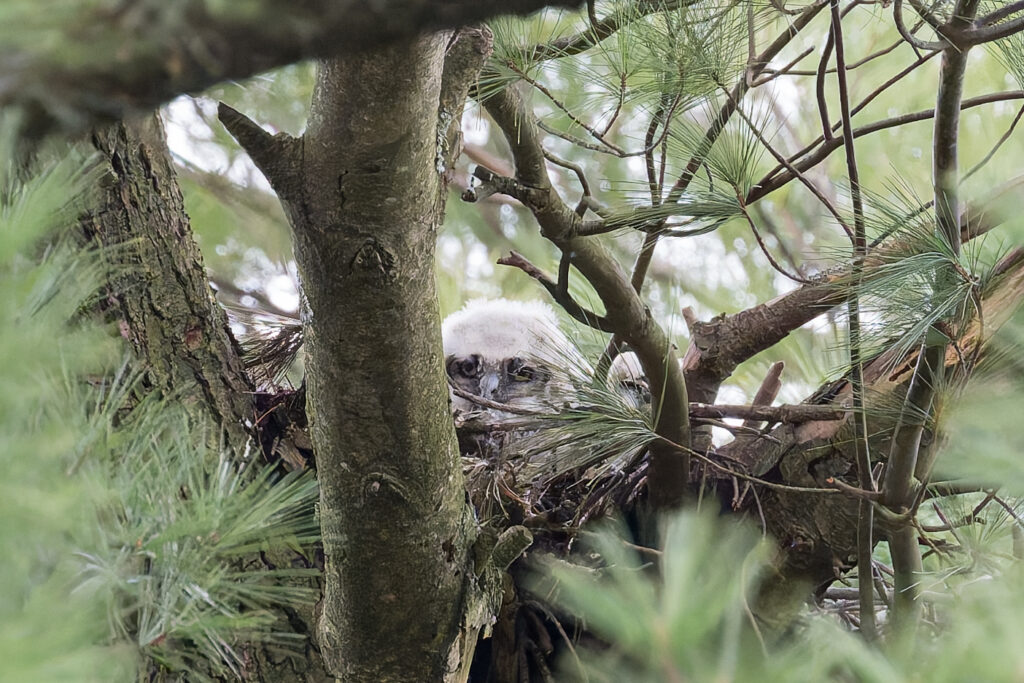
One day later, April 5, the older sibling is seen at left with the younger owlet partially obscured on the right. It’s hard to believe but these two are probably only about a week apart in age. (Photo by Dave Eberly)
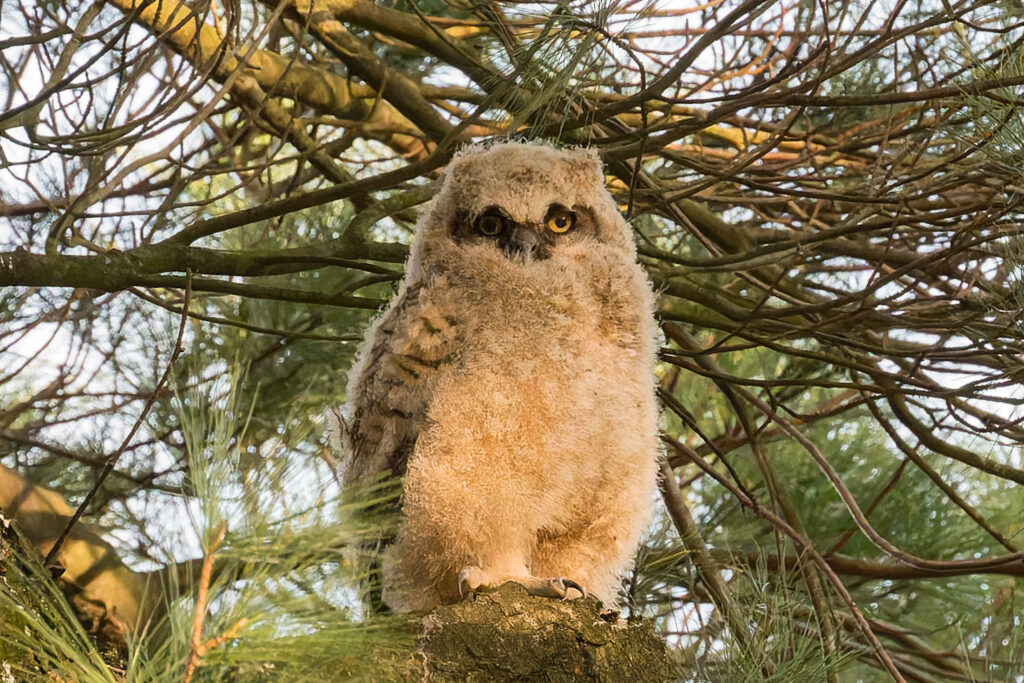
By April 15 the older sibling has walked out of the nest and is roosting on a limb about 10 feet below the nest ... (Photo by Dave Eberly)
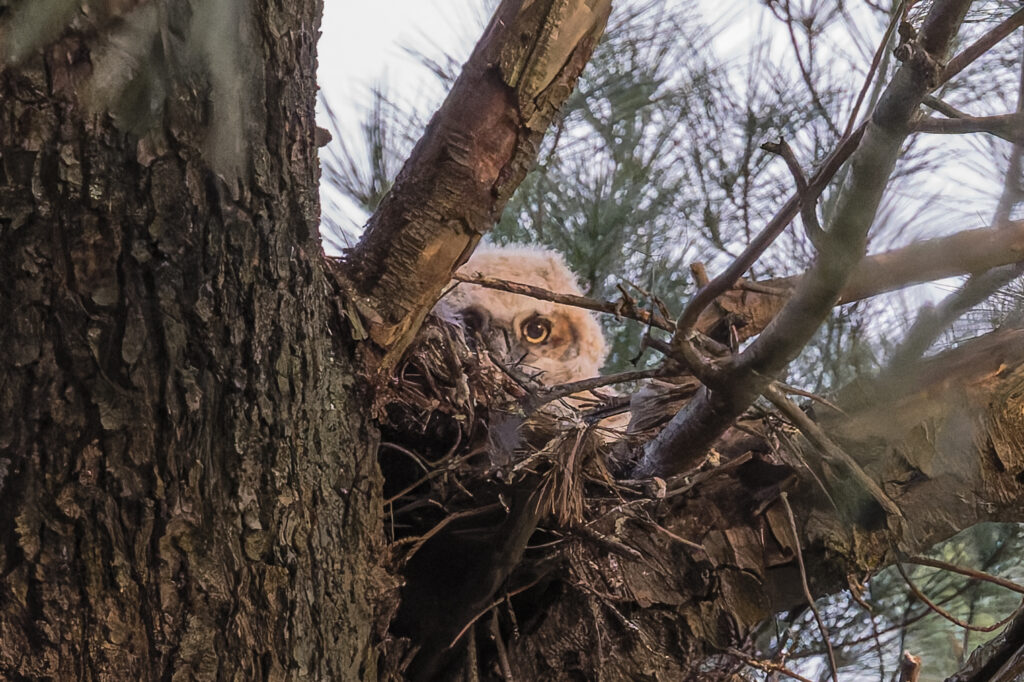
... while the younger sibling is still in the nest. (Photo by Dave Eberly)
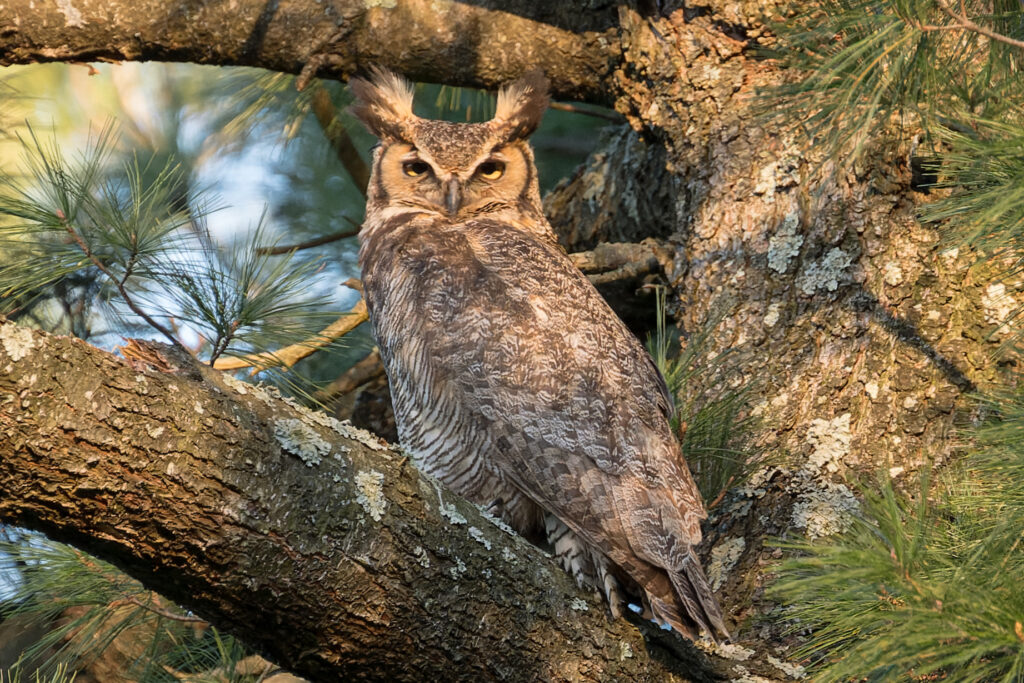
On April 16 Mom or Dad is photographed roosting in a nearby tree standing guard. (Photo by Dave Eberly)
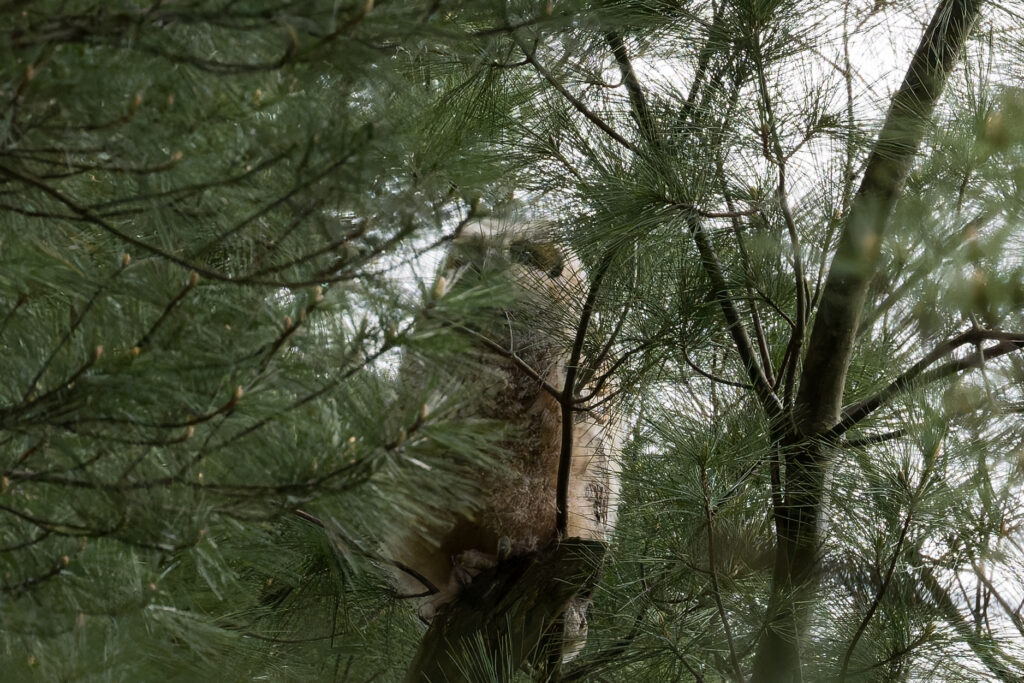
On April 24 the younger sibling was seen to step out of the nest and walk up a limb to sit near a parent who is out of view in this photo. (Photo by Dave Eberly)
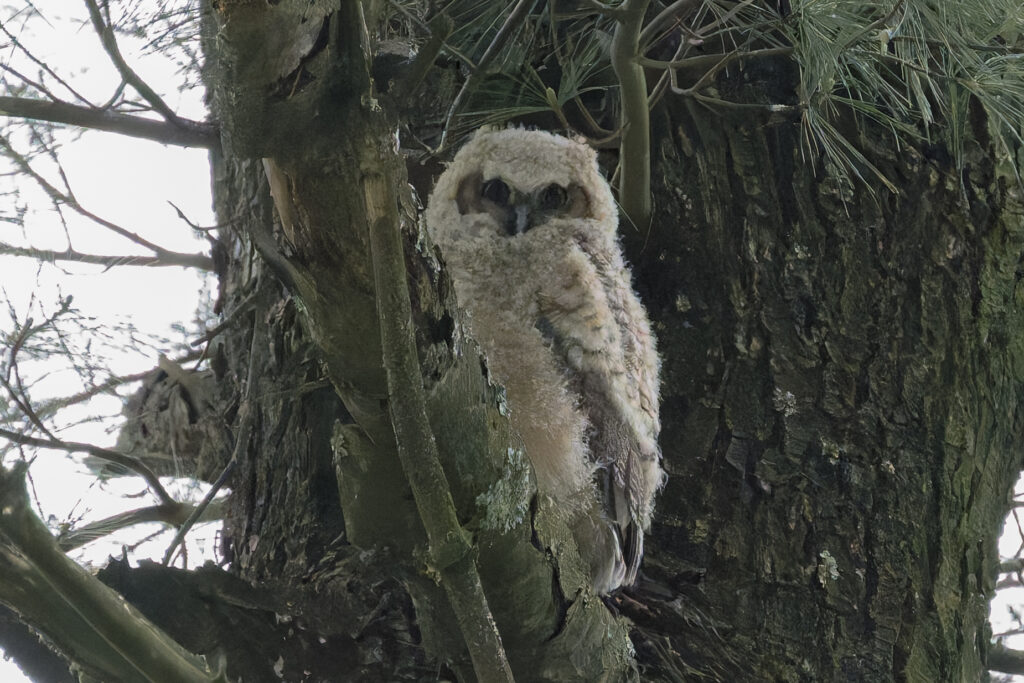
Also on April 24, the elder owlet was seen comfortably roosting on limbs in the nest tree. The interval of them leaving the nests suggests they are 6-7 days apart in age. Since Great Horned Owls lay their eggs and subsequently hatch about every two days there may have been a failed egg in between these two. The older sibling's wing feathers are darkening. He/she will soon be ready for flight. (Photo by Dave Eberly)
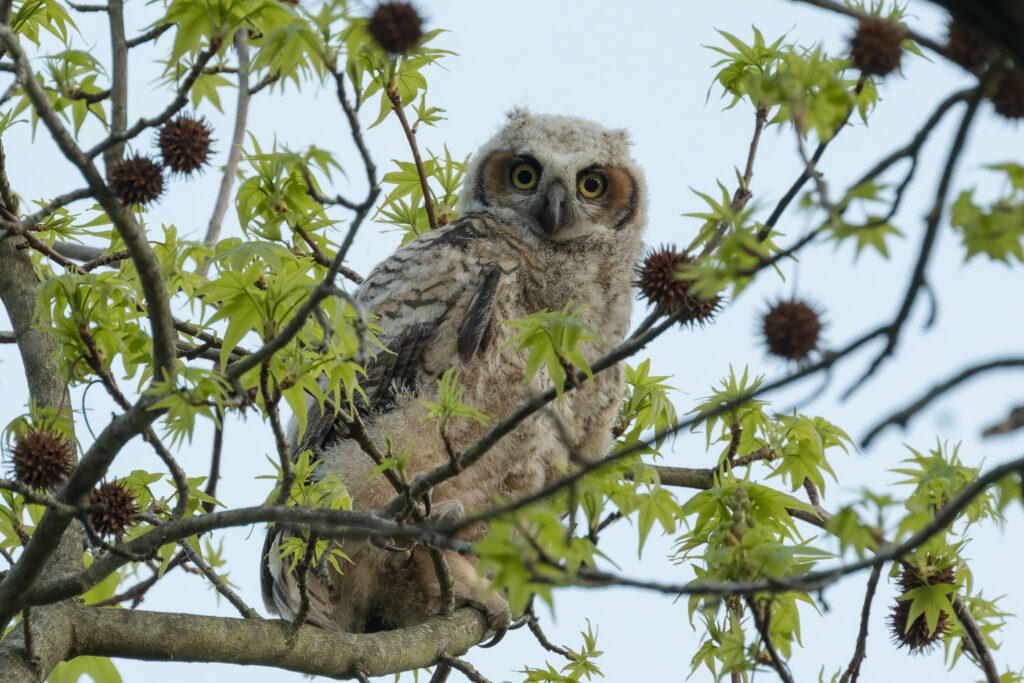
On April 29 the younger owlet was still in the nest tree, but the older sibling was seen to fly into a small Sweetgum tree. This was the first time we documented flight, although it is likely they both were making short flights before this. (Photo by Dave Eberly)
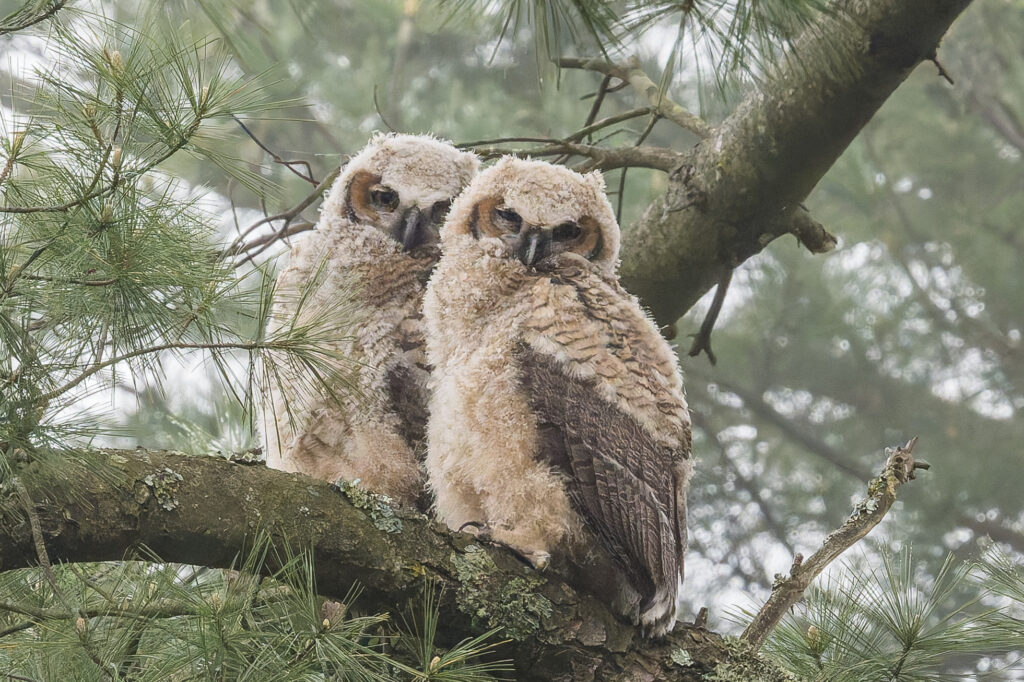
It was May 2 when both owls were spotted roosting together in a pine some 30 feet from the nest tree. (Photo by Dave Eberly)
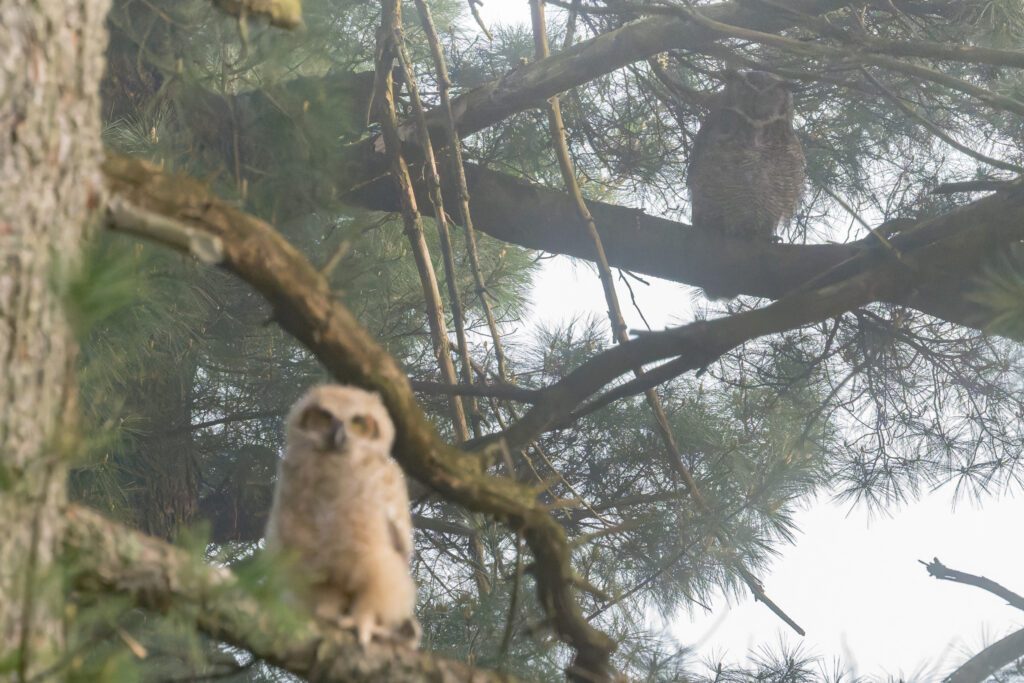
The baby owls continue to be found in the stand of White Pines in which they were born. This photo shows Mom or Dad in the background keeping watch. (Photo by Dave Eberly)
What Lies Ahead
As of this writing the kids are still dependent on their parents for feeding. Under their tutelage the young owls will spend the summer honing their flying and hunting skills until they reach full independence in the fall. It may be a year or two before they find mates and raise families on their own.
The nocturnal habits, mysterious calls, silent flight and human-like faces of owls have invited different cultures to imbue them with a variety of traits that range from omens of death and disease to wisdom and companionship. When I think of the sense of wonder I experienced as we all witnessed the growth of this owl family, the word that comes to mind is connection. Our connection to these magnificent creatures is not so far distant. We humans sometimes seem to forget that in the end all “things” are made of the same stuff. We are not so special. I am grateful to the owls for reminding me of this shared kinship and I wish them well.


